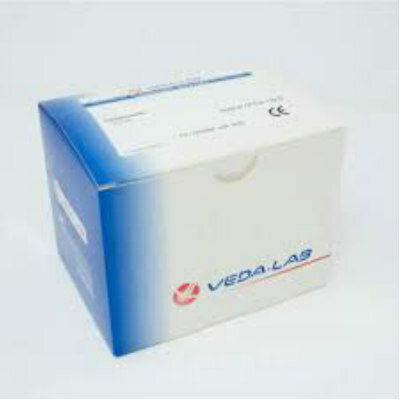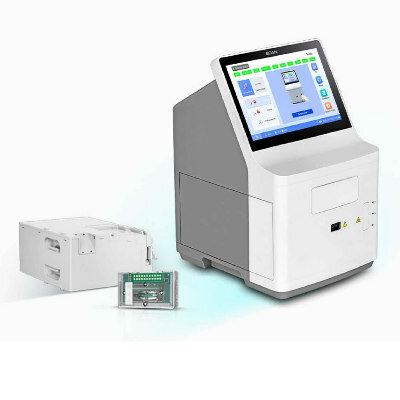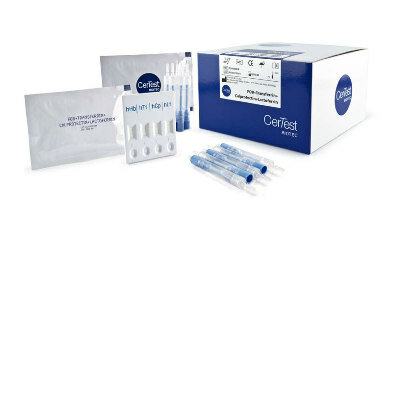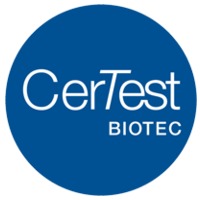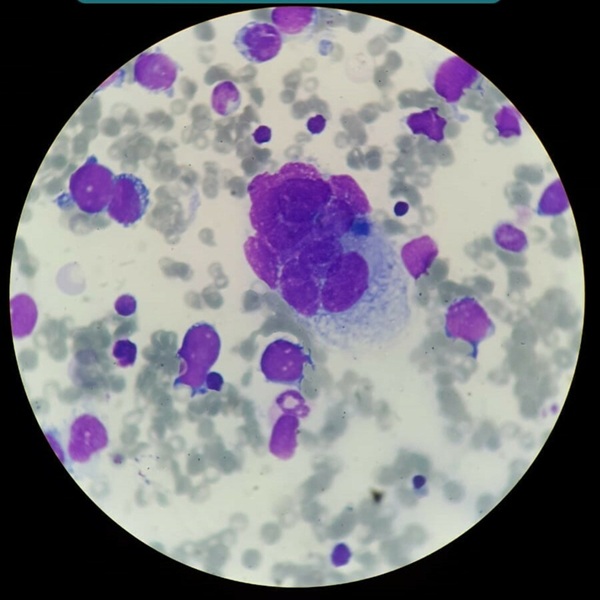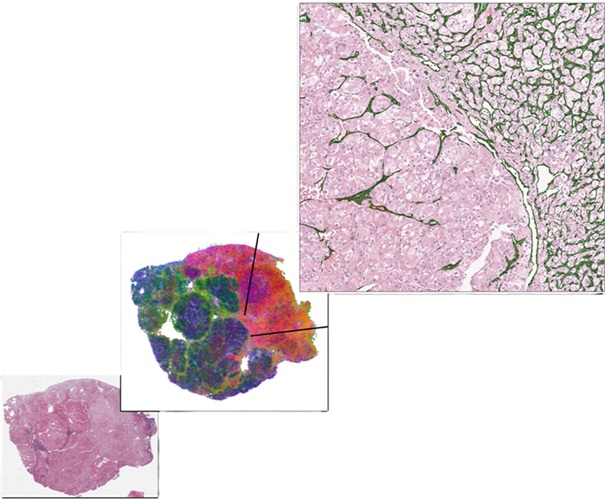Clinical Germline Testing Evaluated for Pediatric Cancer Patients
|
By LabMedica International staff writers Posted on 04 Mar 2021 |
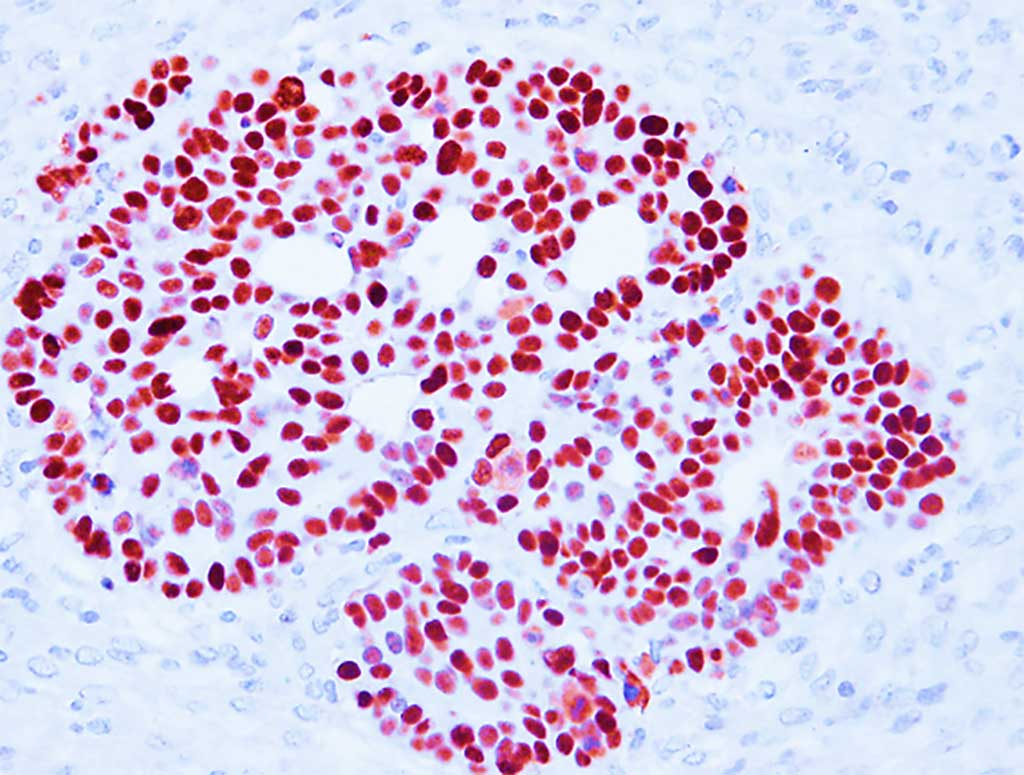
Image: Histopathologic image from a patient with Li Fraumeni syndrome showing accumulation of mutant TP53 in tumoral cells (Photo courtesy of Thierry Soussi, PhD).
Pediatric cancer is rare, with fewer than 10,000 solid tumors diagnosed in children annually in the USA. Previous studies interrogating germline predisposition broadly across pediatric cancer types have found heritable germline predisposition in 8%–12% of patients.
The yield of germline predisposition detected is dependent on the genes included for analysis and variant interpretation as well as the ascertainment biases found in each cohort. Iterative data are required to expand upon the understanding of susceptibility to pediatric cancer and determine the extent to which germline data may translate into clinical practice.
Pediatricians and their colleagues at Memorial Sloan Kettering Cancer Center (New York, NY, USA) conducted matched tumor-normal DNA sequencing on 751 pediatric cancer patients treated at the center from July 2015 to July 2020. Tumor and blood samples were obtained and sequenced using the MSK-IMPACT platform, a capture-based NGS assay capable of identifying sequence mutations, copy number alterations and select gene fusions in 468 genes. Germline data were analyzed in 88 genes and germline pathogenic and likely pathogenic (P/LP) variants were reported. The study covered several different cancer types, including sarcoma, neuroblastoma, central nervous system (CNS) tumors, retinoblastoma, and other rare solid tumors.
The team reported that one or more P/LP variants were found in 138/751 (18%) of individuals when including variants in low-, moderate- and high-penetrance dominant or recessive genes or in 99/751 (13%) of individuals in moderate- and high-penetrance dominant genes. The found 34% of high- or moderate-penetrance variants were unexpected based on the patient’s diagnosis and previous history and 76% of patients with positive results completed a clinical genetics visit, and 21% had at least one relative undergo cascade testing as a result of this testing.
Germline variants were found in 49% of patients with retinoblastoma, 21% of patients with CNS tumors, 15% of patients with neuroblastoma, 12% of patients with sarcoma, and 19% of patients with other tumor types. The most common mutations in high- or moderate-penetrance genes were in RB1 (found in 4% of patients), NF1 (1%) and TP53 (1%) in patients with retinoblastoma and those with a prior clinical diagnoses of neurofibromatosis type 1 (NF1) - or Li Fraumeni syndrome (LFS)-associated tumors.
About 3% of patients had variants in DNA damage repair genes, 1.6 % had mutations in the RAS–MEK or mTOR–PTEN pathway, and 1% had variants in metabolic pathways related to cancer. Among genetic diseases that were not identified by MSK-IMPACT in this study was the growth disorder Beckwith–Wiedemann syndrome, identified in four patients. The authors suggested combining multiple tests in such cases, like next-generation sequencing (NGS) and RNA sequencing, to detect all types of genetic variants.
The authors noted that potential cost savings exist through cancer screening and early detection, prevention, pre-implantation genetic testing, and potentially more effective therapeutics; however, there are also significant costs associated with each of these in addition to the costs of sequencing and clinical genetics visits. The study was published on February 15, 2021 in the journal Nature Cancer.
Related Links:
Memorial Sloan Kettering Cancer Center
The yield of germline predisposition detected is dependent on the genes included for analysis and variant interpretation as well as the ascertainment biases found in each cohort. Iterative data are required to expand upon the understanding of susceptibility to pediatric cancer and determine the extent to which germline data may translate into clinical practice.
Pediatricians and their colleagues at Memorial Sloan Kettering Cancer Center (New York, NY, USA) conducted matched tumor-normal DNA sequencing on 751 pediatric cancer patients treated at the center from July 2015 to July 2020. Tumor and blood samples were obtained and sequenced using the MSK-IMPACT platform, a capture-based NGS assay capable of identifying sequence mutations, copy number alterations and select gene fusions in 468 genes. Germline data were analyzed in 88 genes and germline pathogenic and likely pathogenic (P/LP) variants were reported. The study covered several different cancer types, including sarcoma, neuroblastoma, central nervous system (CNS) tumors, retinoblastoma, and other rare solid tumors.
The team reported that one or more P/LP variants were found in 138/751 (18%) of individuals when including variants in low-, moderate- and high-penetrance dominant or recessive genes or in 99/751 (13%) of individuals in moderate- and high-penetrance dominant genes. The found 34% of high- or moderate-penetrance variants were unexpected based on the patient’s diagnosis and previous history and 76% of patients with positive results completed a clinical genetics visit, and 21% had at least one relative undergo cascade testing as a result of this testing.
Germline variants were found in 49% of patients with retinoblastoma, 21% of patients with CNS tumors, 15% of patients with neuroblastoma, 12% of patients with sarcoma, and 19% of patients with other tumor types. The most common mutations in high- or moderate-penetrance genes were in RB1 (found in 4% of patients), NF1 (1%) and TP53 (1%) in patients with retinoblastoma and those with a prior clinical diagnoses of neurofibromatosis type 1 (NF1) - or Li Fraumeni syndrome (LFS)-associated tumors.
About 3% of patients had variants in DNA damage repair genes, 1.6 % had mutations in the RAS–MEK or mTOR–PTEN pathway, and 1% had variants in metabolic pathways related to cancer. Among genetic diseases that were not identified by MSK-IMPACT in this study was the growth disorder Beckwith–Wiedemann syndrome, identified in four patients. The authors suggested combining multiple tests in such cases, like next-generation sequencing (NGS) and RNA sequencing, to detect all types of genetic variants.
The authors noted that potential cost savings exist through cancer screening and early detection, prevention, pre-implantation genetic testing, and potentially more effective therapeutics; however, there are also significant costs associated with each of these in addition to the costs of sequencing and clinical genetics visits. The study was published on February 15, 2021 in the journal Nature Cancer.
Related Links:
Memorial Sloan Kettering Cancer Center
Latest Pathology News
- Groundbreaking Chest Pain Triage Algorithm to Transform Cardiac Care
- AI-Based Liquid Biopsy Approach to Revolutionize Brain Cancer Detection
- AI-Driven Analysis of Digital Pathology Images to Improve Pediatric Sarcoma Subtyping
- AI-Based Model Predicts Kidney Cancer Therapy Response
- Sensitive and Specific DUB Enzyme Assay Kits Require Minimal Setup Without Substrate Preparation
- World’s First AI Model for Thyroid Cancer Diagnosis Achieves Over 90% Accuracy
- Breakthrough Diagnostic Approach to Significantly Improve TB Detection
- Rapid, Ultra-Sensitive, PCR-Free Detection Method Makes Genetic Analysis More Accessible
- Spit Test More Accurate at Identifying Future Prostate Cancer Risk
- DNA Nanotechnology Boosts Sensitivity of Test Strips
- Novel UV and Machine Learning-Aided Method Detects Microbial Contamination in Cell Cultures
- New Error-Corrected Method to Help Detect Cancer from Blood Samples Alone
- "Metal Detector" Algorithm Hunts Down Vulnerable Tumors
- Novel Technique Uses ‘Sugar’ Signatures to Identify and Classify Pancreatic Cancer Cell Subtypes
- Advanced Imaging Reveals Mechanisms Causing Autoimmune Disease
- AI Model Effectively Predicts Patient Outcomes in Common Lung Cancer Type
Channels
Clinical Chemistry
view channel
AI-Powered Blood Test Accurately Detects Ovarian Cancer
Ovarian cancer ranks as the fifth leading cause of cancer-related deaths in women, largely due to late-stage diagnoses. Although over 90% of women exhibit symptoms in Stage I, only 20% are diagnosed in... Read more
Automated Decentralized cfDNA NGS Assay Identifies Alterations in Advanced Solid Tumors
Current circulating cell-free DNA (cfDNA) assays are typically centralized, requiring specialized handling and transportation of samples. Introducing a flexible, decentralized sequencing system at the... Read more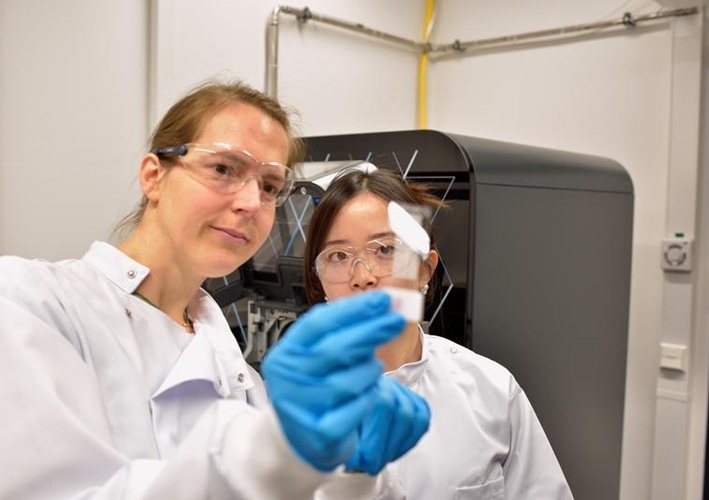
Mass Spectrometry Detects Bacteria Without Time-Consuming Isolation and Multiplication
Speed and accuracy are essential when diagnosing diseases. Traditionally, diagnosing bacterial infections involves the labor-intensive process of isolating pathogens and cultivating bacterial cultures,... Read more
First Comprehensive Syphilis Test to Definitively Diagnose Active Infection In 10 Minutes
In the United States, syphilis cases have surged by nearly 80% from 2018 to 2023, with 209,253 cases recorded in the most recent year of data. Syphilis, which can be transmitted sexually or from mother... Read moreHematology
view channel
First Point-of-Care Heparin Monitoring Test Provides Results in Under 15 Minutes
Heparin dosing requires careful management to avoid both bleeding and clotting complications. In high-risk situations like extracorporeal membrane oxygenation (ECMO), mortality rates can reach about 50%,... Read more
New Scoring System Predicts Risk of Developing Cancer from Common Blood Disorder
Clonal cytopenia of undetermined significance (CCUS) is a blood disorder commonly found in older adults, characterized by mutations in blood cells and a low blood count, but without any obvious cause or... Read moreImmunology
view channel
Stem Cell Test Predicts Treatment Outcome for Patients with Platinum-Resistant Ovarian Cancer
Epithelial ovarian cancer frequently responds to chemotherapy initially, but eventually, the tumor develops resistance to the therapy, leading to regrowth. This resistance is partially due to the activation... Read more
Machine Learning-Enabled Blood Test Predicts Immunotherapy Response in Lymphoma Patients
Chimeric antigen receptor (CAR) T-cell therapy has emerged as one of the most promising recent developments in the treatment of blood cancers. However, over half of non-Hodgkin lymphoma (NHL) patients... Read moreMicrobiology
view channel
New Blood Test Detects Up to Five Infectious Diseases at POC
Researchers have developed a prototype flow-through assay capable of detecting up to five different infections, with results that can be quickly analyzed and transmitted via a specialized smartphone app.... Read more
Molecular Stool Test Shows Potential for Diagnosing TB in Adults with HIV
Tuberculosis (TB), caused by the bacterium Mycobacterium tuberculosis, led to 1.25 million deaths in 2023, with 13% of those occurring in people living with HIV. The current primary diagnostic method for... Read morePathology
view channel
Groundbreaking Chest Pain Triage Algorithm to Transform Cardiac Care
Cardiovascular disease is responsible for a third of all deaths worldwide, and chest pain is the second most common reason for emergency department (ED) visits. With EDs often being some of the busiest... Read more
AI-Based Liquid Biopsy Approach to Revolutionize Brain Cancer Detection
Detecting brain cancers remains extremely challenging, with many patients only receiving a diagnosis at later stages after symptoms like headaches, seizures, or cognitive issues appear. Late-stage diagnoses... Read moreTechnology
view channel
Advanced Predictive Algorithms Identify Patients Having Undiagnosed Cancer
Two newly developed advanced predictive algorithms leverage a person’s health conditions and basic blood test results to accurately predict the likelihood of having an undiagnosed cancer, including ch... Read more
Light Signature Algorithm to Enable Faster and More Precise Medical Diagnoses
Every material or molecule interacts with light in a unique way, creating a distinct pattern, much like a fingerprint. Optical spectroscopy, which involves shining a laser on a material and observing how... Read more
Disposable Microchip Technology Could Selectively Detect HIV in Whole Blood Samples
As of the end of 2023, approximately 40 million people globally were living with HIV, and around 630,000 individuals died from AIDS-related illnesses that same year. Despite a substantial decline in deaths... Read more
Pain-On-A-Chip Microfluidic Device Determines Types of Chronic Pain from Blood Samples
Chronic pain is a widespread condition that remains difficult to manage, and existing clinical methods for its treatment rely largely on self-reporting, which can be subjective and especially problematic... Read moreIndustry
view channel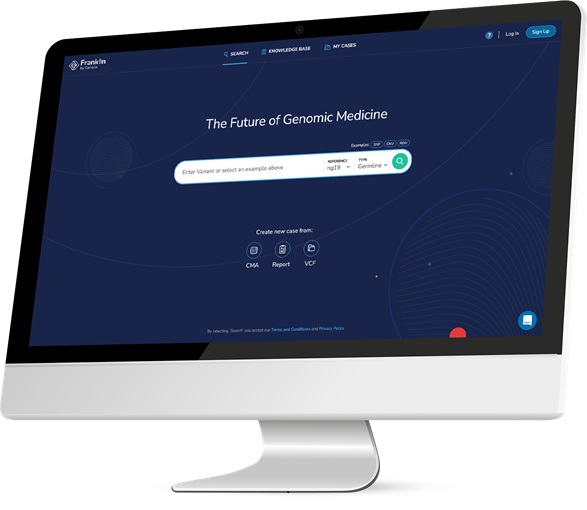
Qiagen Acquires NGS Analysis Software Company Genoox
QIAGEN (Venlo, the Netherlands) has signed a definitive agreement to acquire Genoox (Tel Aviv, Israel), a provider of artificial intelligence (AI)-powered software that enables clinical labs to scale and... Read more
Cepheid and Oxford Nanopore Technologies Partner on Advancing Automated Sequencing-Based Solutions
Cepheid (Sunnyvale, CA, USA), a leading molecular diagnostics company, and Oxford Nanopore Technologies (Oxford, UK), the company behind a new generation of sequencing-based molecular analysis technologies,... Read more
Grifols and Tecan’s IBL Collaborate on Advanced Biomarker Panels
Grifols (Barcelona, Spain), one of the world’s leading producers of plasma-derived medicines and innovative diagnostic solutions, is expanding its offer in clinical diagnostics through a strategic partnership... Read more




